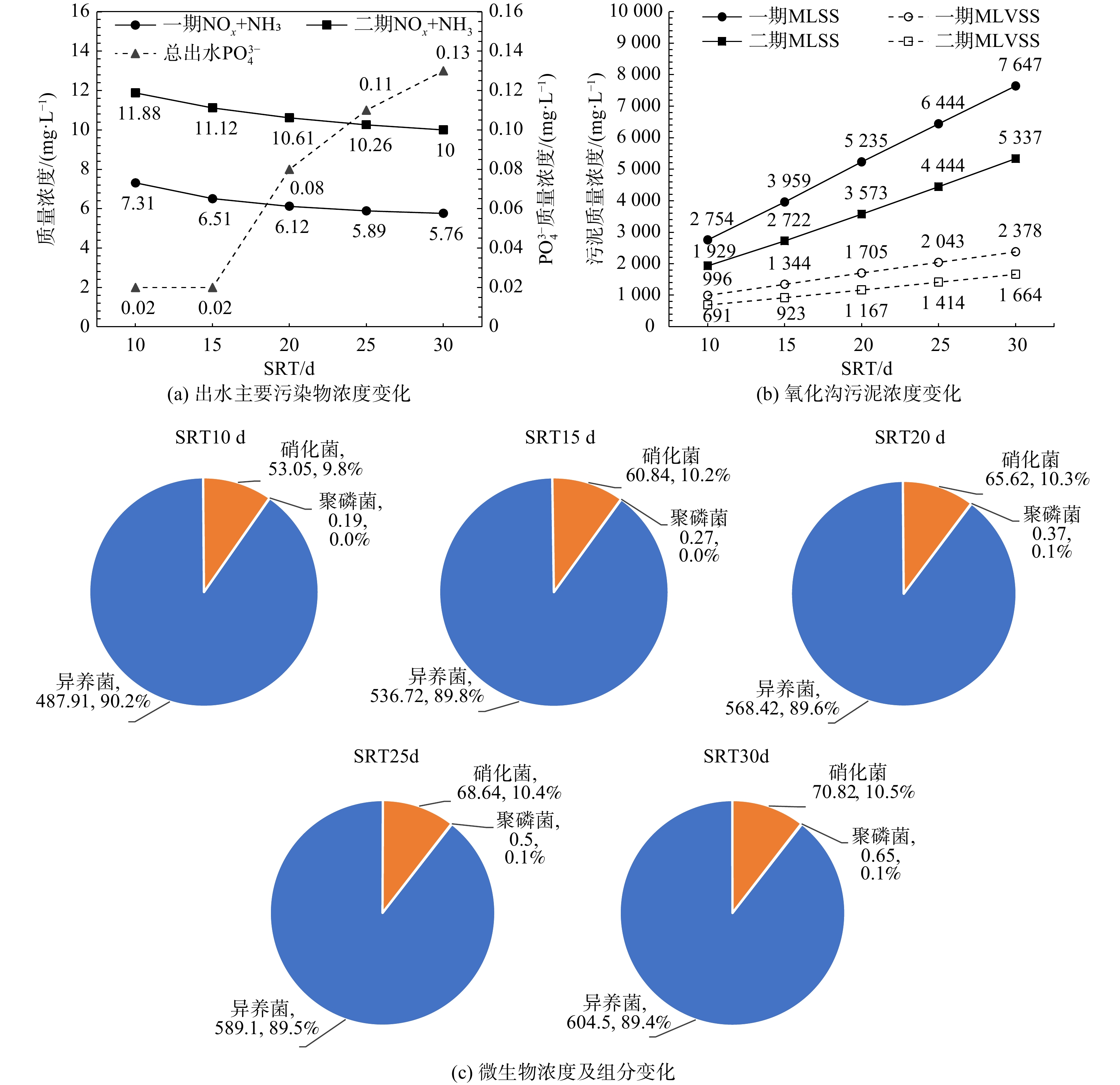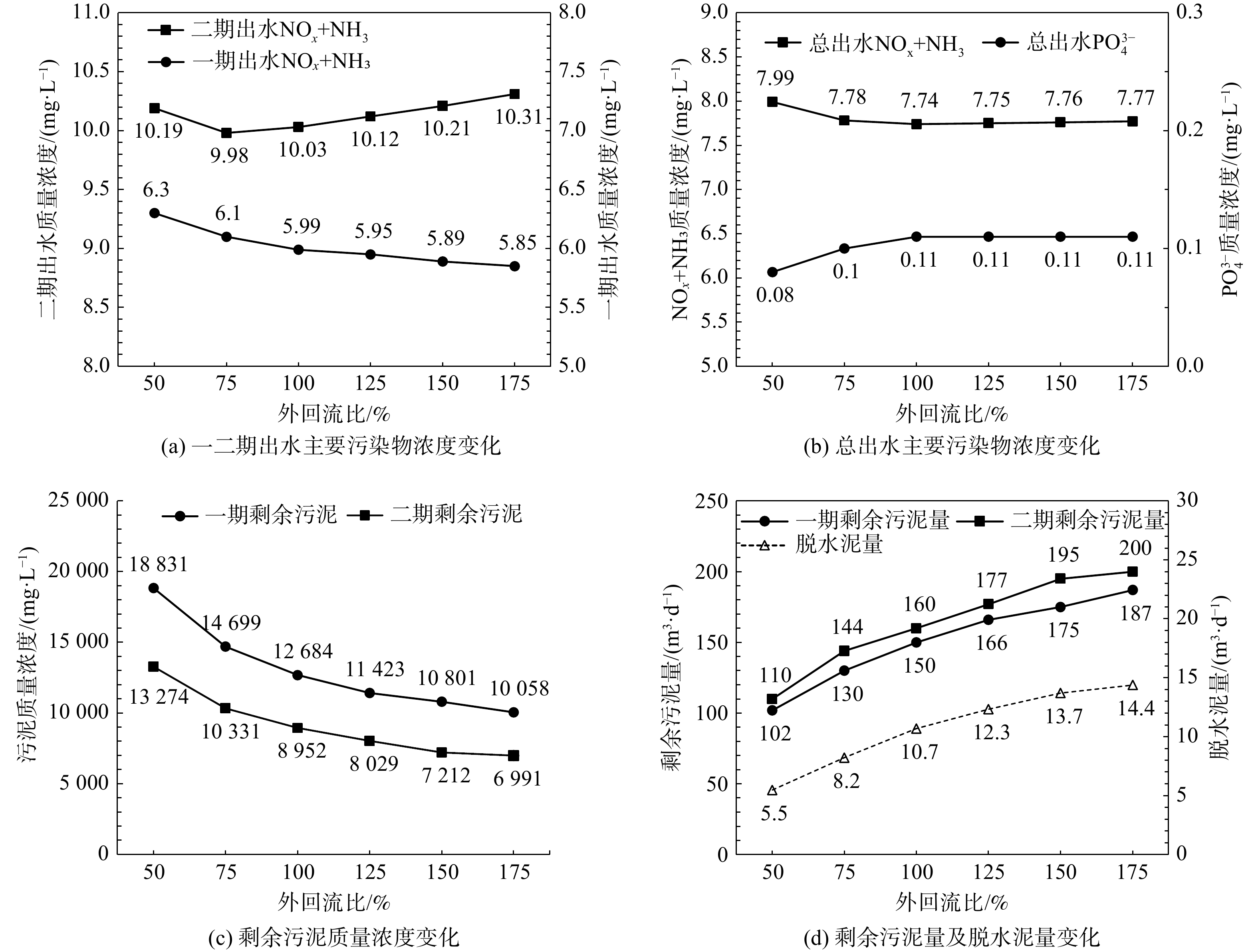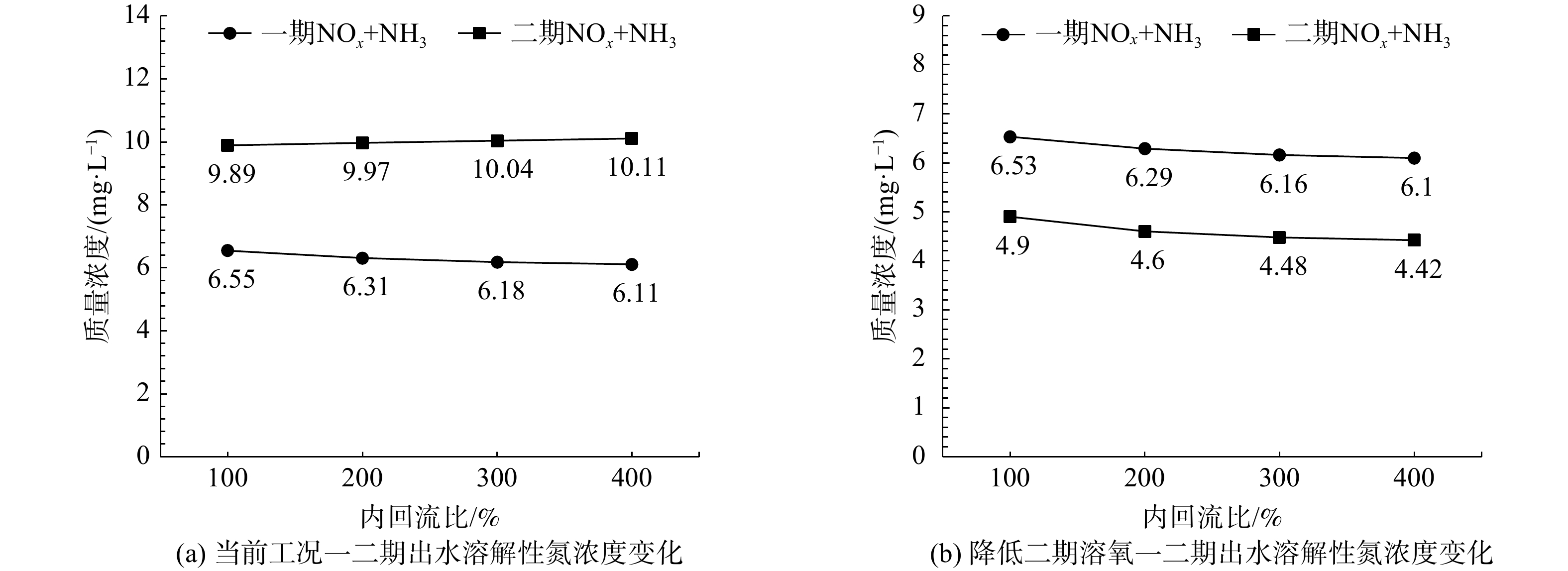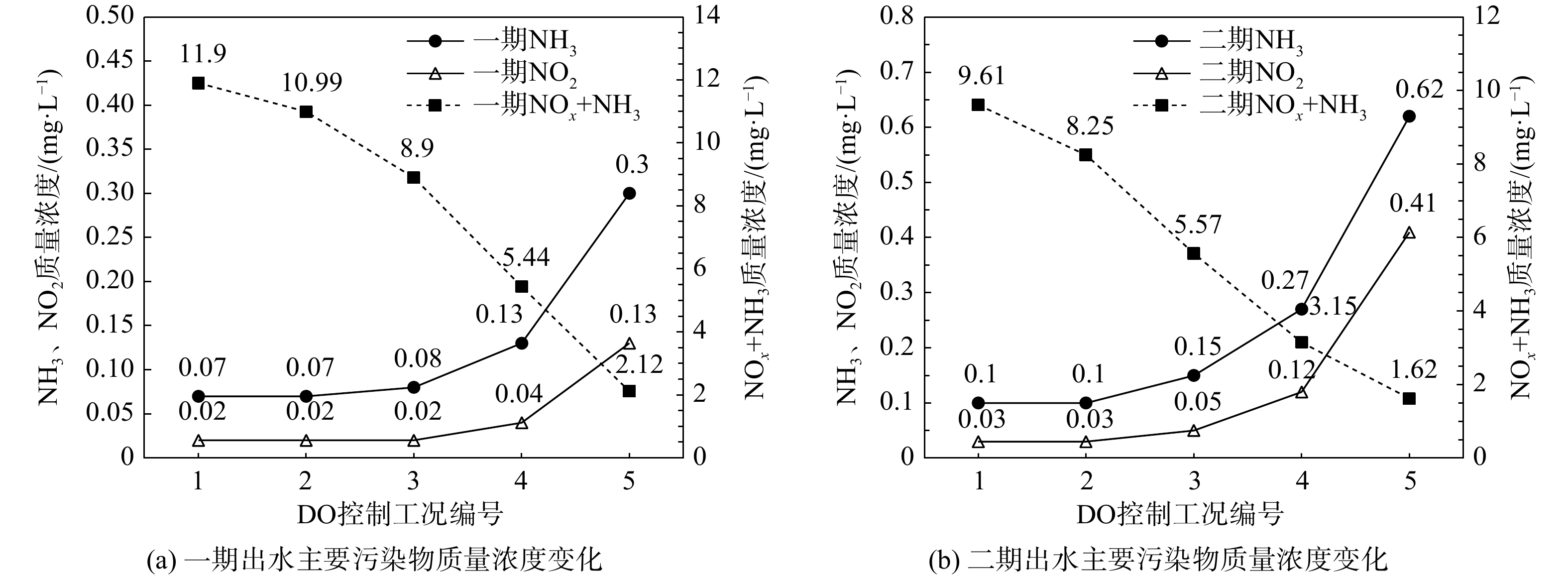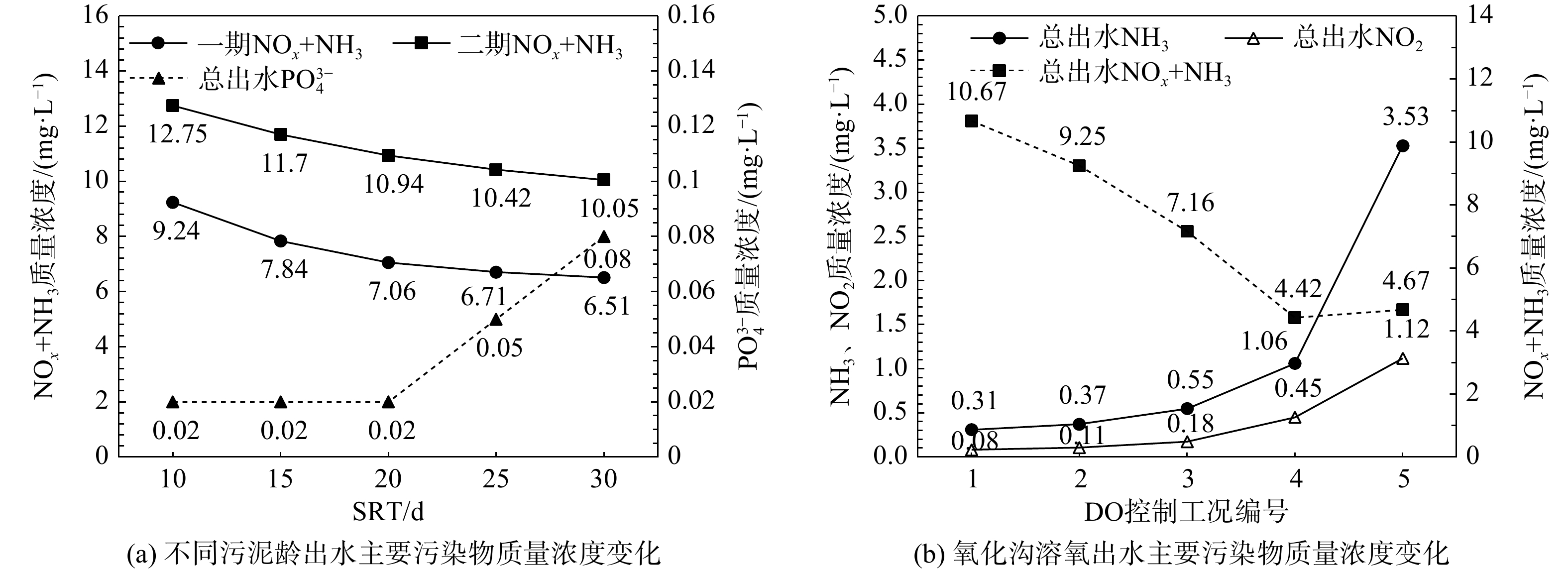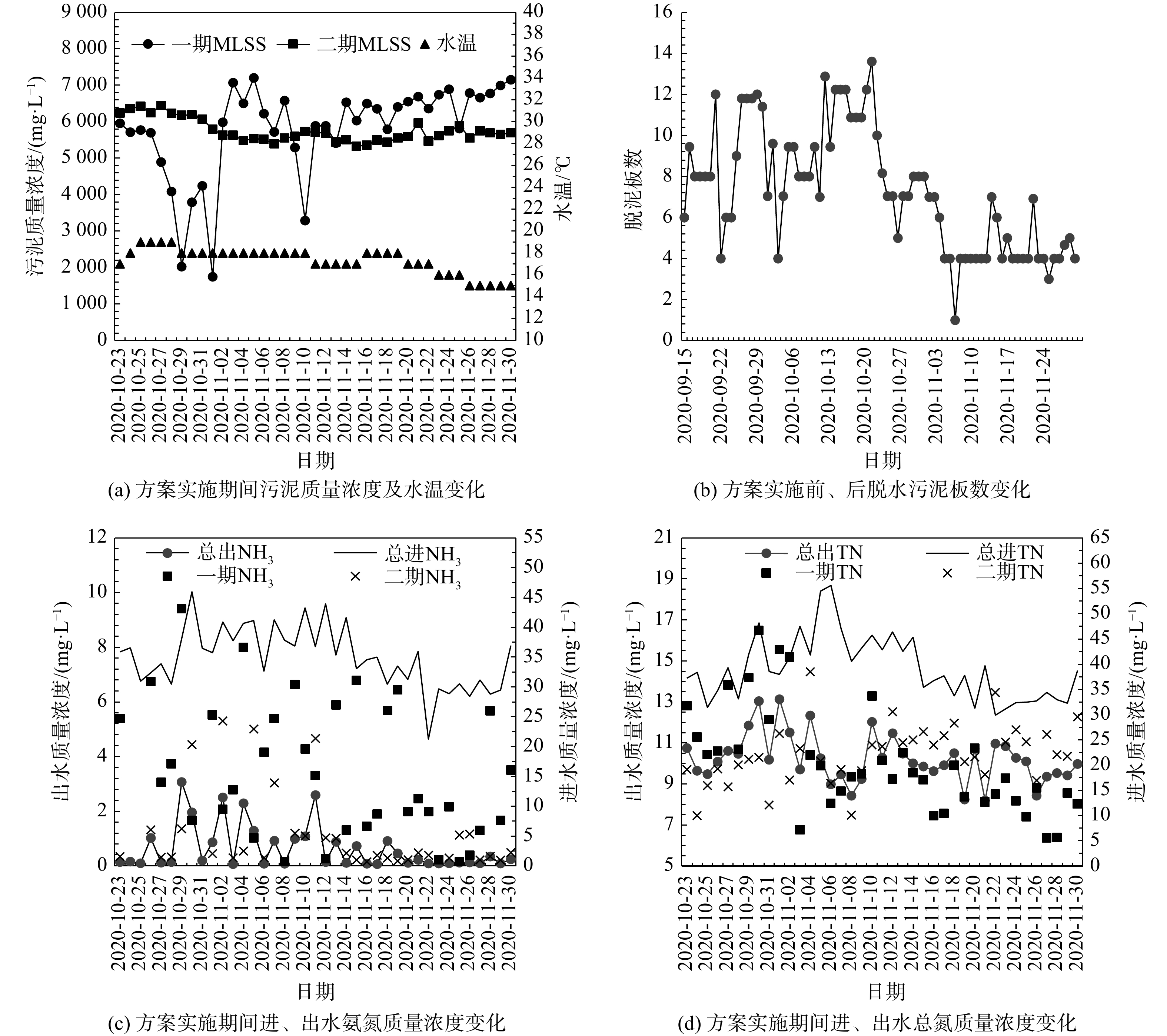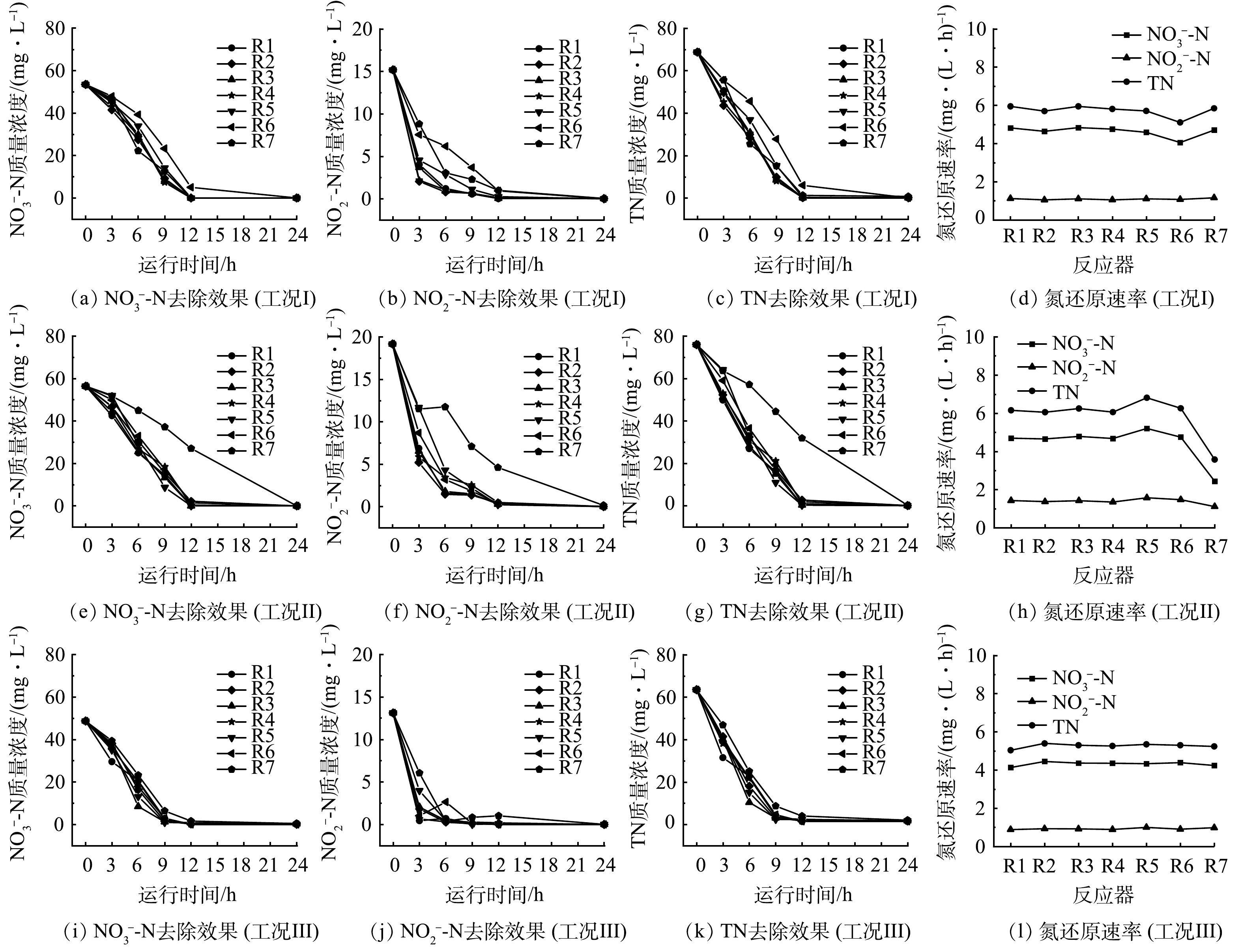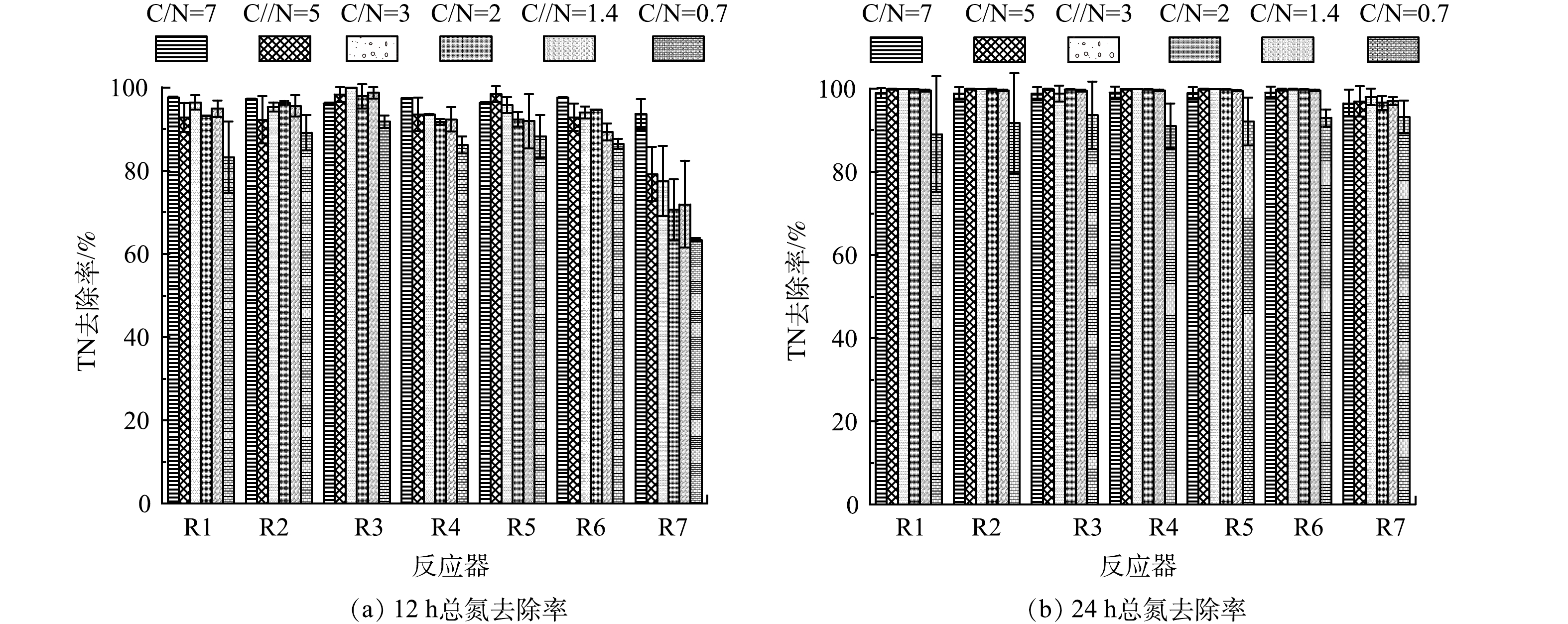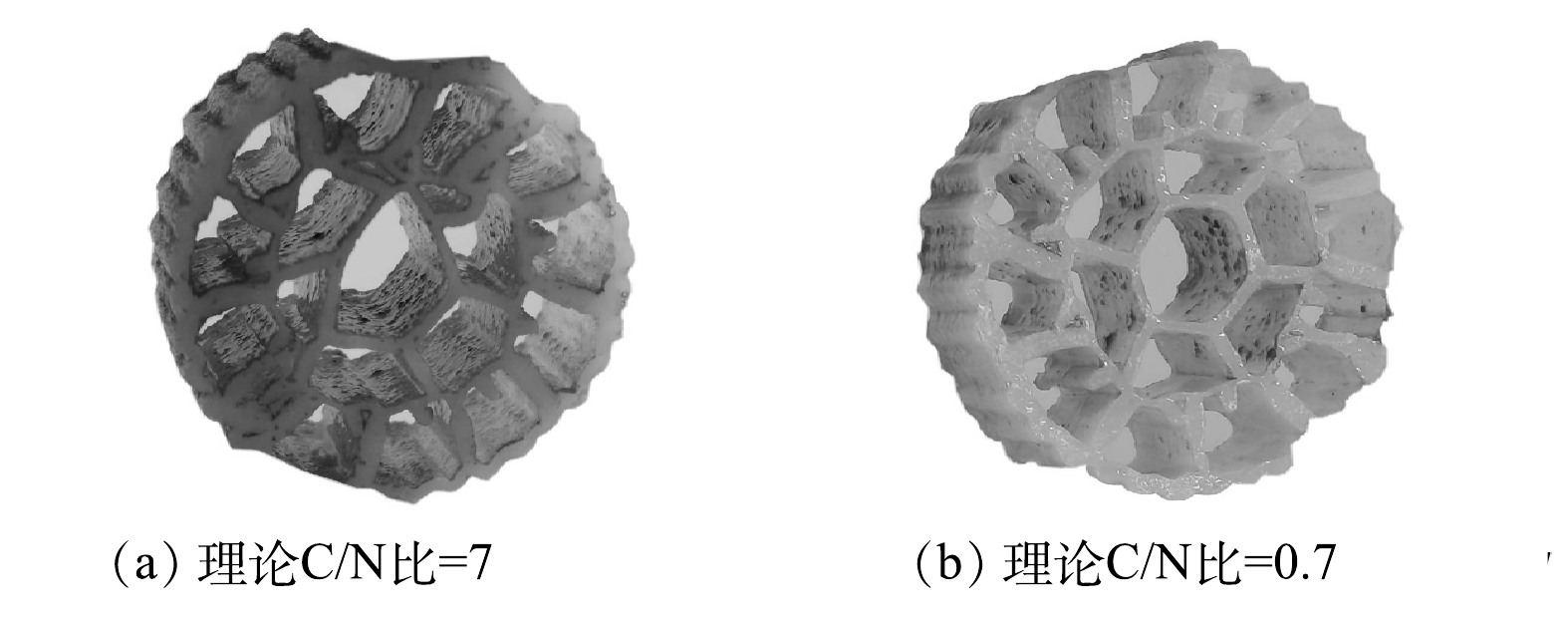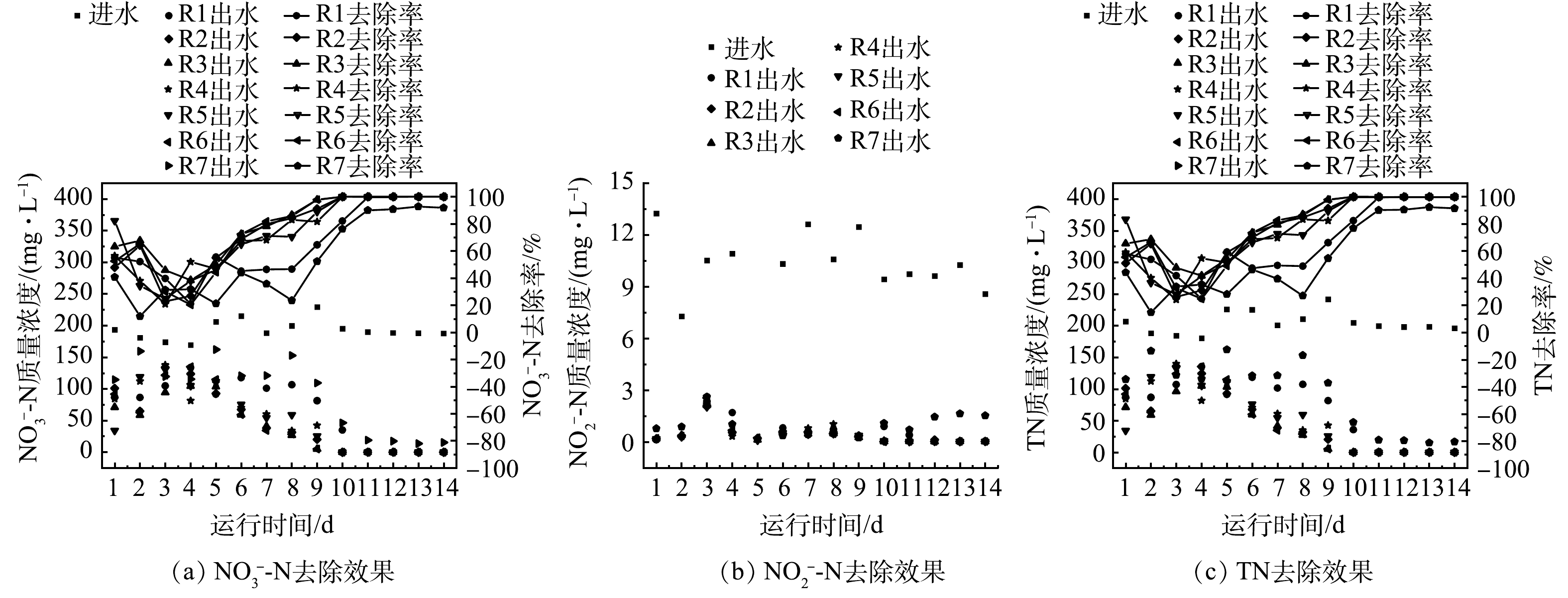-
高盐废水指总含盐质量百分数至少1%的废水,常含有高浓度Na+、Ca2+、Cl−或SO42-等无机盐离子[1-2]。近年来,工业高盐废水排放量剧增,含盐量超标的工业废水直接排放水中会导致水体矿化度升高,造成严重污染,引发生态系统破坏等问题[3]。此外,过量的氮作为废水中的关键污染物会造成水体富营养化、水质恶化和对环境的潜在危害[4]。高盐含氮废水可生化性差、处理难度大,常规物理法和化学法运行成本较高且脱氮效果较低,而生物脱氮通过缺氧环境的异养细菌以有机碳化合物为电子供体将硝酸盐还原成氮气或氮氧化物,具有经济、高效、二次污染低等优点,是高盐含氮废水处理的优选方法之一[5-7]。
高盐废水中较高的盐度导致微生物细胞渗透压失衡,造成菌体脱水破裂,抑制微生物生长与繁殖,盐度进一步提高会导致微生物细胞死亡[8]。倘若无法解决盐度抑制问题,生物法处理高盐含氮废水的脱氮效果将大打折扣,甚至会因高盐度胁迫而无法成功启动运行。盐度梯度驯化微生物群落提高微生物活性使其逐渐适应高盐度水平能够最小化盐度对生物脱氮的影响[9-10]。通过向生物处理体系中添加功能性微生物改善原处理体系对污染物降解效果的技术称为生物强化技术[11]。分离培养高效耐盐脱氮菌,并制备出复合耐盐脱氮功能菌剂被认为是增强高盐含氮废水处理性能的有效方法[12-13]。复合菌剂被证明具有较高的降解能力,能够更好地适应各种环境因子的变化并有效去除废水氮素、有机物及其他污染物[12]。生物强化技术可用于活性污泥法或生物膜法中,以载体固定微生物的生物膜法具有污泥产生量少、固液易分离、处理效果稳定等优势[14]。菌源、载体类型和碳源水平是影响生物膜法处理高盐废水脱氮性能的重要因素[14-16]。
目前,许多研究侧重于使用生物法处理高氯化钠废水中的氮素[17-25],而较少研究关注工业废水中的其他高浓度盐,如硫酸盐。高浓度硫酸盐对微生物的活性抑制与氯化钠类似[26]。有研究[27]表明,在硫酸盐对反硝化型甲烷厌氧氧化系统生物反应过程的影响中,当硫酸盐浓度达到0.83 mmol·L−1时可对系统开始产生明显的抑制作用,进一步提升至4.06 mmol·L−1后系统完全失去脱氮性能。在上流式厌氧污泥床系统耐盐驯化阶段,将进水硫酸盐质量浓度由3 g·L−1升高至5 g·L−1后,发现系统在硫酸盐还原反硝化单元中硝氮去除率出现大幅度降低[28]。值得注意的是,有研究指出,含有大量硫酸盐的废水不仅会抑制微生物活性,还可能显著促进硫酸盐还原菌(sulfate reducing bacteria,SRB)富集,产生有毒气体硫化氢[29-31]。在缺氧条件下硫酸盐还原和反硝化过程可以同时进行,反硝化细菌对SRB具有竞争抑制作用,能够降低SRB活性甚至使其数量减少,导致硫酸盐还原生成的硫化物浓度降低[32-35]。因此,高硫酸盐反硝化过程控制硫酸盐还原菌作用至关重要。为适应高盐环境和控制SRB还原作用,本文自制耐盐反硝化污泥和反硝化复合菌粉,分别以此为菌源启动生物膜系统,研究了不同硫酸盐梯度下菌源、载体类型和碳源水平对生物膜系统的影响特性以及成熟生物膜系统在实际高硫酸盐高氮工业废水处理中的脱氮性能,以期为生物强化技术在高硫酸盐含氮废水处理中提供参考。
-
实验装置采用序批式生物膜反应器(sequencing batch biofilm reactor,SBBR),有效容积为1L(图1);装置内分别布设悬浮填料和生物绳,其中悬浮填料与生物绳比表面积分别为900 m2·m−3和350 m2·m−3并以35%堆积率布设于装置内。
-
实验用水采用人工模拟含盐高氮废水,分别以50 mg·L−1 KNO3和20 mg·L−1 NaNO2为氮源,以0.3 mg·L−1 KH2PO4为磷源和甲醇为碳源,盐度成分包含12.5~37.5 g·L−1 Na2SO4和5 g·L−1 NaCl,以模拟不同盐度(1%、2%和3%)条件;实际工业高盐高氮废水采自中石化洛阳分公司一催双脱废水,该废水包含高浓度总氮,以硝氮(NO3−-N,(193.24±15.72) mg·L−1)为主,并含少量亚硝氮(NO2−-N,(11.11±2.99) mg·L−1),盐度2.7%(以SO42-为主)。
-
采集中石化洛阳分公司含盐废水处理生化池中污泥并经耐盐反硝化菌培养基驯化30 d后获得耐盐反硝化污泥(denitrifying activated sludge,DAS)。耐盐反硝化复合菌粉(denitrifying bacterial agents, DBA)制备过程如下:将污泥摇匀后吸取10 mL于富集培养基(0.5%),30 ℃下培养48 h;吸取富集培养的菌液10 mL于100 mL液体耐盐反硝化菌培养基中(2%),30 ℃下培养72 h,反复操作3次;取0.2 mL混合菌液通过浓度梯度稀释涂布于分离培养基,倒置于30 ℃的恒温培养箱中培养72 h,挑取周围产生蓝色晕圈的多个菌落,通过富集培养基增殖混合。取混合菌液于离心管中,于4 000 r·min−1离心10 min弃上清液得到菌种,用生理盐水重悬离心重复两次,用富集培养基和PAM培养基重悬菌种后,将菌剂倒入经高温灭菌、粉碎的固体载体麦麸中振荡发酵,最后干燥制成干粉菌剂。
富集培养基包含:1 g·L−1 牛肉膏、5 g·L−1 蛋白胨、1 g·L−1 KNO3、20 g·L−1 NaCl,pH=7.5~7.8。耐盐反硝化菌培养基:5 g·L−1 CH3OH、1 g·L−1 KNO3、0.8 g·L−1 NaNO2、7.9 g·L−1 K2HPO4·3H2O、1.5 g·L−1 KH2PO4、0.1 g·L−1 MgSO4·7H2O、20 g·L−1 NaCl和2 mL微量元素,pH=7.2~7.4;固体培养基加2%琼脂。分离培养基:5 g·L−1 CH3OH、1 g·L−1 KNO3、0.8 g·L−1 NaNO2、7.9 g·L−1 K2HPO4·3H2O、1.5 g·L−1 KH2PO4、0.1 g·L−1 MgSO4·7H2O、20 g·L−1 NaCl、2 mL微量元素、2%琼脂、1 mL溴百里酚蓝(取0.1 g溴百里酚蓝溶于10 mL无水乙醇),pH=7.2~7.4。微量元素:50 g·L−1 EDTA、2.2 g·L−1 ZnSO4·7H2O、1 g·L−1 CaCl2、5 g·L−1 FeSO4·7H2O、1.57 g·L−1 CuSO4·5H2O、5.06 g·L−1 MnCl·4H2O、1.1 g·L−1 Na2MoO4·4H2O,1.61 g·L−1 CoCl2·6H2O。PAM培养基:4 g·L−1 C6H5Na3O7·2H2O、0.25 g·L−1 CaCl2、3.06 g·L−1 Na2HPO4、2.5 g·L−1 NaCl、3 g·L−1 KH2PO4、2.75 g·L−1 (NH4)2SO4、0.25 g·L−1 MgSO4·7H2O、0.01 g·L−1蔗糖,1000 mL无菌水。
-
1)耐盐复合菌剂挂膜启动SBBR工艺的影响因素实验。为研究不同菌源和载体对耐盐复合菌剂挂膜启动SBBR工艺的影响,启动7组SBBR装置(R1~R7),其中反应装置R1~R5采用悬浮填料为载体,设置不同菌源(表1)(MLVSS=1 200 mg·L−1);采用3种不同载体启动反应器设置,相同菌源条件(DAS:DBA=2:2),包括经污泥预处理(浸泡7 d并清洗掉表层松散污泥)的悬浮填料(R4)、无处理的悬浮填料(R6)和生物绳(R7),具体参数如表1所示。向各反应装置添加菌源和红糖(5 g·L−1)闷挂3 d后排水排泥,并进入正常进水启动期。为构建良好的缺氧反硝化条件,各反应器静态运行,溶解氧在0.2~0.5 mg·L−1,设置反应器进水理论TOC/TN值(C/N)为7,控制进水pH为6.94±0.37,氧化还原电位为-85.78±1.59 mV。为研究盐度对SBBR工艺的脱氮性能的影响,各反应装置根据不同盐度梯度条件设置3个工况:工况I(1%盐度)、工况II(2%盐度)和工况III(3%盐度)。生物膜系统稳定后进行多次周期测量,探索运行周期污染物去除过程。
2)不同C/N比对耐盐菌SBBR工艺反硝化性能影响特性及其应用研究。待上述装置进入稳定期后,分别添加不同甲醇量以研究不同C/N比对反硝化工艺的影响,即设置C/N比为7、5、3、2、1.4和0.7,每个C/N比条件下测试3次。在优化的C/N比条件下,将其应用于处理实际高盐高氮废水。上述系统运行过程中,定期取样监测进出水NO3−-N、NO2−-N、NH4+-N、TN、TOC和pH等水质指标。同时,各反应装置水力停留时间(HRT)设置为12 h和24 h,温度控制在(25±2) ℃。
-
NO3−-N、NO2−-N、NH4+-N和TN等常规指标测定方法参见《水和废水监测分析方法(第4版)》(国家环境保护总局,2002)[36],各指标在水样经针孔注射器连接针式过滤器(0.25×0.45 μm)后测定;乙二胺四乙酸二钠-钡滴定法用于分析SO42--S;有机物浓度以TOC表示,并由总有机碳分析仪(德国元素)检测;pH计(PHS-3C)检测pH;所有数据统计分析时,当P<0.05时,认为统计上有显著差异,置信水平为95.0%。
-
1)不同接种菌源对SBBRs工艺脱氮性能的影响。从生物膜接种菌源角度分析,在工况I前期启动阶段,反应器R1硝氮去除率在第6天达到100%,而其余反应器均需要8 d才能达到相同的处理效果(图2(a))。这说明DAS较使用其他菌源的反应器生物膜成熟耗时更短。工况II阶段中各反应器脱氮性能无显著变化(P>0.05);待系统适应后调整为工况III,发现各反应器脱氮性能均有不同程度下降,与其他反应器相比,R1性能性能下降比较明显,表明DAS比DBA附着在载体上成熟时间更短且耐盐性更强。盐度对硝酸盐还原菌具有抑制作用,高盐环境不利于反硝化菌的生存[37]。HONG等[8]探讨了盐度对膜生物反应器系统中废水处理和活性污泥细菌群落演替的影响,发现随着盐度升高,系统的处理性能降低,当无机盐质量浓度过高(NaCl>21 g·L−1)时,废水中氮的去除会受到影响,并发现盐度胁迫可改变微生物群落的结构特征,耐盐微生物在种群中逐渐占主导地位。节梦瑞[28]研究表明,SO42-质量浓度的升高会对反硝化菌造成冲击,从而导致系统硝氮去除率出现大幅下降。本研究中,整个实验稳定期R1、R2、R3、R4、R5反应器的硝氮去除率分别为(99.22±0.49)%、(98.75±1.86)%、(99.37±0.64)%、(99.79±0.58)%、(99.62±1.58)%。结果表明,不同菌源反应器生物膜成熟后反硝化能力无显著差异(P>0.05)。各反应器出水中无亚硝氮及多余氨氮产出,总氮去除率变化特征与硝氮去除率相近,均能达到98%以上(图2(b)和图2(c))。唐婧等[14]在使用复合菌剂强化处理高盐废水脱氮的研究中发现系统脱氮率可稳定在96%以上,反应中始终无硝氮与亚硝氮积累,生物强化系统具有同步硝化好氧反硝化能力,且在高盐度(盐度为5%和7%)冲击下能够快速恢复原有的脱氮能力。曹新等[38]观察到不同来源的微生物对载体上生物膜的特征及氨氮处理效果有显著影响,经活性污泥驯化的菌株在挂膜后的生物量与生物活性均优于市售硝化菌液。汤默然等[39]研究复配菌剂对河水的净化效果时发现复配菌剂能够强化河水中氨氮的去除,对实际河水的脱氮净化具有较强的应用潜能。本研究中DAS和DBA均展现出高效的脱氮性能,且DAS的挂膜效率与耐盐性均优于DBA。
2)不同载体启动SBBRs脱氮性能的比较。从固定化载体介质角度分析,在工况I阶段R7与R4生物膜在6~7 d成熟,保持高效脱氮性能并持续稳定,生物膜启动周期明显短于R6(11 d)。结果表明,生物绳与经污泥预处理的悬浮填料表面生物膜成熟速度均快于未经处理的悬浮填料,推测是生物绳表面易粘附的DBA使微生物更加不易脱落且表面环境更适宜生物膜的快速生长,说明前期对载体进行污泥预处理能促进微生物挂膜以缩短生物膜启动周期。如图3(a)所示,工况I稳定期R4硝氮平均去除率为100%,与R6(99.87%)和R7(99.85%)无显著差异(P>0.05)。然而,工况II与工况III反应器R7硝氮去除率显著下降,且盐度越高下降幅度更大,而适应盐度后硝氮去除率均能缓慢恢复到90%以上。与此相比,R4与R6脱氮性能在工况II无显著变化,设置为工况III后总氮去除率下降并在2 d内恢复到90%以上。此外,工况III阶段R7硝氮去除率为(91.14±11.66)%,显著低于R4((98.01±6.20)%)与R6((98.73±3.77)%)(P<0.05),表明高盐度胁迫下悬浮填料表面生物膜比生物绳更稳定且脱氮性能受盐度干扰较小。在进水亚硝氮含量为(19.27±1.36) mg·L−1的条件下,反应器R4与R6在整个运行期间的出水亚硝氮均低于0.5 mg·L−1,而R7在盐度提升后其出水亚硝氮的含量显著上升,最高达到14.26 mg·L−1,适应盐度后逐渐降至0.5 mg·L−1以下(图3(b))。各装置运行稳定后总氮去除率变化特征整体与硝氮去除率的变化相近(图3(c))。以上结果表明,盐度梯度上升对生物绳载体脱氮性能具有显著影响,悬浮填料面对盐度胁迫稳定性更佳。对悬浮填料和生物绳载体挂膜前后的形貌进行对比发现,载体表面有生物膜形成(图4)。陈园[15]研究指出生物质附着并存活的载体是决定废水处理性能的关键材料。KOSTRYTSIA等[40]在研究生物膜载体类型在生物硫自养脱氮工艺优化时,发现不同载体表面的生物量及微生物群落稳定性均有显著性差异。与上述研究结果类似,本研究中悬浮填料与生物绳载体具有不同的形态与比表面积,面对盐度上升时所表现出的运行稳定性差异显著。
3)不同SBBRs中有机物与硫酸盐的变化特征。在不同盐度下各反应器有机物去除率如图5所示。在各盐度下不同菌源与载体类型反应器有机物去除率均无显著差异(P>0.05)。工况I各反应装置整体有机物平均去除率达到70%,工况II平均去除率下降至60%左右,而工况III有机物平均去除率上升至80%。结果表明,盐度驯化中期阶段含盐量的上升会导致系统有机物去除率下降,而经过耐盐驯化后的生物膜面对高盐度胁迫可恢复至较高的有机物去除率。赵凯峰[41]研究表明在生物耐盐极限内含盐量升高不会降低废水生物处理的有机物去除率,适当的含盐量可提高污泥絮凝性,对生物处理系统起到稳定作用。
本研究中不同盐度下各反应装置进出水中硫酸根离子浓度均无显著差异(P>0.05),表明各阶段系统生物膜对硫酸根离子的还原作用很低,可忽略有害气体硫化氢的产出,这说明系统生物膜反硝化菌可抑制SRB硫酸盐还原作用。有研究表明,SRB并非严格厌氧菌,可在一定溶解氧浓度下生长且能够耐受4.5 mg·L−1的溶解氧,硫酸盐有机废水在厌氧或缺氧环境下容易滋生SRB[32-33]。魏华等[34]在缺氧环境下硫酸盐还原对反硝化过程影响的特性研究中指出,在适宜的溶解氧条件下,硫酸盐和硝酸盐同时存在的生物脱氮体系中硫酸盐还原和反硝化过程可以同时进行。JI等[29]在缺氧-好氧生物膜反应器处理高硫酸盐高氨氮废水的影响研究中发现缺氧池中具有丰富的SRB菌。有研究通过向系统内投加亚硝酸盐以增强反硝化作用,可快速改变细菌生存环境,进而有效抑制SRB的活性,降低 SRB数量[35]。因此,在缺氧环境下硫酸盐还原和反硝化过程可能同时存在,而本实验SBBR系统中通过筛选菌源为反硝化菌控制SRB量,可成为抑制硫酸盐还原作用的有效手段。
4)反硝化途径分析。不同盐度梯度下实验稳定期测定各反应器三次周期氮营养指标变化与降解速率结果如图6所示。从三态氮周期变化过程可知,在进水硝氮质量浓度为(54.33±4.34) mg·L−1条件下,在各盐度梯度下不同菌源反应器R1~R5在周期12 h内硝氮水平均逐渐下降并基本去除完全。在0~12 h内拟合总氮去除速率可发现,在工况II中R1~R5总氮去除速率(6.06~6.81 mg·(L·h)−1)之间无显著差异,整体略高于工况I(5.70~5.95 mg·(L·h)−1)与工况III(5.26~5.40 mg·(L·h)−1)。这表明使用不同菌源的SBBR系统间脱氮性能无显著差异,在工况II条件下表现出最佳的脱氮速率。对不同载体反应器周期内氮营养指标变化进行分析,工况II中R4、R6均能在周期12 h内反硝化完全,而R7需要进一步延长至24 h去除完全。R7在0~12h拟合总氮去除速率(3.58 mg·(L·h)−1)显著低于R4(6.06 mg·(L·h)−1)和R6(6.26 mg·(L·h)−1),而工况I与工况III中R4、R6与R7脱氮速率无明显差异,表明工况II条件下生物绳脱氮性能低于悬浮填料,低盐度下载体类型对SBBR脱氮速率影响不大,且经盐度梯度驯化后生物绳能进一步提高自身脱氮速率。各反应器周期内总氮转化与硝氮转化极为相似且出水氨氮和亚硝氮均无积累,这表明各反应器硝酸盐还原主要依赖微生物反硝化作用,系统硝酸盐还原途径主要以反硝化为主,无显著硝酸盐异化还原为氨作用。
-
盐度设置为3%并对各装置不同C/N比下12 h与24 h总氮去除率变化特征进行分析(图7), 在C/N比为7时,R1~R7装置12 h总氮去除率分别为(97.64±0.20)%、(97.23±0.08)%、(96.09±0.31)%、(97.41±0.11)%、(96.23±0.24)%、(97.58±0.12)%、(93.63±3.62)%(图7(a))。结果表明,不同菌源反应器间脱氮性能均保持90%以上且无显著差异(P>0.05),而悬浮填料脱氮性能略高于生物绳。在C/N比梯度降至1.4的过程中,各反应器12 h总氮去除率无显著下降,C/N比继续降至0.7后R1~R7 12 h总氮去除率出现较大幅度下降。进一步提高处理时间为24 h,在C/N比为1.4~7时,不同装置基本均能实现完全反硝化,与12 h处理时间性能较为相似。值得注意是,随着C/N比下降,生物膜量及其厚度随之明显降低(图8)。以甲醇为唯一反硝化碳源时,理论化学计量方程式[42-44]如式(1)~(2)所示。
由式(1)~(2)可见,理论上每还原1 g NO3−-N和1 g NO2−-N分别需要消耗2.47 g和1.53 g甲醇。装置进行反硝化所需最低理论TOC为57.79 mg·L−1,即理论C/N比为0.83。装置C/N比梯度在1.4~7内均高于理论值,不同系统均能实现彻底反硝化,而C/N比降至0.7后低于理论值导致各装置脱氮性能出现大幅度降低。PAN等[16]的研究表明,COD/TN比对高盐废水的脱氮效率、微生物群落结构和代谢途径有明显影响。艾海男等[45]观察到生物膜培养成熟后,其厚度随C/N比的升高而逐渐增大,生物膜内的物质浓度表现出明显差异。吴淑妍等[46]研究表明,C/N比的减小会降低与反硝化相关的微生物酶活性。与上述研究结果类似,本研究中过低C/N比会使生物膜变薄且耐盐菌SBBR工艺反硝化性能显著降低。
优选C/N比为2(为理论值的2.4倍)以保证碳源量足够,向各装置供给实际工业高盐高氮废水并检测脱氮效果。如图9所示,各反应装置经前期C/N比梯度下降的实验后,面对实际高盐高氮废水时((193.24±15.72) mg·L−1 NO3−-N,(11.11±2.99) mg·L−1 NO2−-N),硝氮去除率初始5 d内均低于60%,而后于9~11 d达到90%以上,其中R1~R6反硝化完全且无显著差异(P>0.05),而R7硝氮去除率((91.38±1.22)%)低于其他反应器。这进一步说明悬浮填料对实际工业高盐高氮废水的脱氮性能优于生物绳。此外,各反应器总氮去除率变化特征与硝氮去除率一致,R1~R6可完全去除硝氮和亚硝氮,各反应器出水亚硝氮与氨氮的积累不明显。以上结果表明,耐盐反硝化复合菌驯化成熟的生物膜能高效处理实际高硫酸盐高氮工业废水。
-
1) 以低盐度(1%)启动系统,不同菌源和载体条件下SBBRs启动时间均较短(6~11 d),其中反硝化污泥较反硝化复合菌粉表现出更短的生物膜启动周期(提前2 d启动),生物绳表面易粘附反硝化复合菌粉的特性及载体经污泥预处理也能加快生物膜系统启动。
2)以低盐度(1%)启动获得的成熟生物膜通过梯度盐度提升至2%和3%后,各装置均能维持90%以上硝氮去除,其中3%盐度下悬浮填料系统反硝化完全(>98%),显著高于生物绳系统(91.1±11.7)%。系统硝酸盐还原途径以反硝化为主,且无显著硝酸盐异化还原为氨和硫酸盐还原作用。
3)理论C/N比在1.4~7内,系统总氮去除率均稳定保持>90%。在碳源充足条件下(C/N比>1.4)能快速适应高硫酸盐环境,也能高效处理高盐高氮废水,且悬浮填料较生物绳面对高盐度胁迫时的脱氮性能更稳定。
4)优选C/N比为2实验室内处理石化厂高硫酸盐(2.7%)高氮(TN≈200 mg·L−1)废水,系统适应驯化后可获得稳定高效总氮去除率,且悬浮填料去除率(>99%)与稳定性均优于生物绳(>90%)。
耐盐反硝化污泥与复合菌剂对高硫酸盐含氮废水的处理性能
Treatment performance of high-sulfate nitrogenous wastewater by salt-tolerant denitrifying activated sludge and compound bacteria agents
-
摘要: 以耐盐反硝化污泥(DAS)和反硝化复合菌剂(DBA)为菌源,启动序批式生物膜系统(SBBRs)处理高硫酸盐含氮废水。结果表明,以相对低盐度(1%:12.5 g·L−1 SO42−和5 g·L−1 NaCl)启动系统,在不同菌源和载体条件下SBBRs启动时间均较短(6~11 d),其中以DAS为菌源、载体污泥浸制预处理均能缩短启动周期。提升SO42-质量浓度至25 g·L−1 (盐度2%)和37.5 g·L−1 (盐度3%)后,各装置的硝氮去除率均可维持90%以上,其中3%盐度下悬浮填料系统反硝化完全(>98%),显著高于生物绳系统(91.1±11.7)%。理论TOC/TN比为1.4~7,系统总氮去除率均稳定保持90%以上。优选TOC/TN值为2的实验室内处理石化厂高硫酸盐(2.7%)高氮(TN≈200 mg·L−1)废水,系统适应驯化后可获得稳定高效的总氮去除率,且悬浮填料去除率(>99%)与稳定性均优于生物绳(>90%)。系统硝酸盐还原途径以反硝化为主,且无显著硝酸盐异化还原为氨和硫酸盐还原作用。Abstract: In this study, salt-tolerant denitrifying activated sludge (DAS) and denitrifying bacterial agents (DBA) were used as inoculants to start sequential batch biofilm systems (SBBRs) treating high-sulfate nitrogenous wastewater. The results showed that the start-up period of SBBRs was short (6-11 d) with different sources of inoculants and carriers at salinity of 1% (12.5 g·L−1 SO42− and 5 g·L−1 NaCl), of which the start-up period of SBBRs was reduced with DAS as inoculants or carriers pretreatment via sludge leaching. After upgrading SO42− mass concentrations to 25 g·L−1 (salinity of 2%) and 37.5 g·L−1 (salinity of 3%), SBBRs were still able to maintain the nitrate reduction rates higher than 90%. The complete denitrification (>98%) occurred in SBBRs with suspended carrier at salinity of 3%, which was significantly higher than that (91.1±11.7)% of SBBR with biological rope carrier. The TN removal efficiency of SBBRs consistently maintained at >90% at the theoretical TOC/TN ratios of 1.4-7. SBBRs were further used to treat high sulfate (2.7%) and nitrogen rich (TN≈200 mg·L−1) wastewater at a TOC/TN ratio of 2, and stable and highly efficient TN removal occurred after the system adapted to acclimation, and higher reduction rates (>99%) and stability in the suspended carrier were also achieved than those in carrier biological rope (>90%). The nitrate reduction pathway in the system was dominated by denitrification without significant dissimilatory nitrate reduction to ammonium and sulfate reduction.
-
Key words:
- salt-tolerant compound bacteria /
- bioaugmentation /
- sulfate /
- bacterial source /
- carrier /
- C/N ratio
-
近20年来,我国在城镇水环境卫生方面取得了长足发展。截至2019年底,用于污水处理及其再生利用的市政公用设施建设投资已接近每年1 000亿元,较20年前翻了近10倍;全国城镇污水处理厂总数也由2000年初的481座增加至4 140座,并仍以每年约5%的增速增长[1]。然而,国内污水处理体量的迅猛提升并不代表污水处理技术水平的快速提高。随着国家/地方污水排放标准日益收紧,国内老旧污水处理厂普遍遇到稳定达标难、能耗药耗高等运营技术问题[2-3]。
基于活性污泥模型(activated sludge model,ASM)的生物建模技术经过30余年的发展,在国内已逐步应用于工程领域[4]。在污水厂运营优化方面,郝晓地等[5]利用代尔夫特-活性污泥联合代谢模型(TUD-ASM Model)模拟对比了UCT(University of Cape Town)工艺的优势,结果表明,在国内污水厂升级改造时通过强化反硝化除磷菌(Denitrifying Phosphorus removal Bacteria)的作用可实现碳源与除磷药剂的节省。郝二成等[6]利用GPS-X软件成功构建了大连某污水处理厂UCT工艺数学模型,模拟结果可为该厂运行优化提供曝气与加药控制方案,以实现节能降耗。然而,国内的模型研究仍以数据分析和理论探索为主,缺少应用型案例及对相关模拟结论的试验与验证,导致生物模型用于解决我国污水处理厂实际运营技术问题的经验不足,故国内亦尚未形成成熟的生物建模技术应用标准。
本研究以泗县污水处理厂改良型氧化沟工艺为案例,利用经过实践检验的系统性三步数据清洗方法完成了全厂生物建模与模型校正,结合模型校正参数实现了对污水处理厂的问题诊断,最后利用校正后的模型完成技术优化方案比选。通过实时跟踪改造效果,完成了模拟优化方案验证,以期为生物建模技术在国内污水处理厂问题诊断与运行优化应用中提供参考。
1. 材料和方法
1.1 污水处理厂概况
案例水厂为泗县污水处理厂,总设计规模40 000 m3·a−1,采用“改良型氧化沟+活性砂滤池”工艺,分2期共4条水处理线。其中,一期正式投产于2008年且原为Carrousel氧化沟工艺,2017年完成提标改造后,将氧化沟前端廊道分隔为独立缺氧池,并新建厌氧池,出水标准由一级B提升为一级A;同年,二期正式通水且主体工艺与提标后的一期基本一致。一、二期共用1套预处理单元,包括粗格栅、细格栅和旋流曝气沉砂池。污水经预处理后由管道重力自流至一、二期改良型氧化沟, 4组二沉池出水混合后经活性砂滤池统一排出。一、二期共用1条污泥处理线,剩余污泥均排入2座贮泥池静置2~4 h后,经污泥调理池投加脱水剂(CaO与FeCl3)进入板框压滤机排出,全厂工艺流程图详见图1。2017年至今,水厂总出水执行《城镇污水处理厂污染物排放标准》(GB 18918-2002)A标准,脱水污泥含水率<60%。
在水质水量方面,案例厂全部为生活污水且无工业废水掺杂,通过整理该厂2019年水质检测数据发现,该厂全年水质稳定、无明显波动,仅雨季期间(8月)平均进水水质偏低。这与旧城区采用雨污合流管网有关(见表1)。研究期间,水厂平均日处理水量为37 757 m3·d−1,约占设计能力的94.3%。此外,城区主要进水泵站均由水厂运行人员控制,因此,全年水量控制稳定,无明显冲击。
表 1 实验室2019年历史进水化验数据Table 1. Laboratory data of historical influent in 2019季度 月份 COD/(mg·L−1) 氨氮/(mg·L−1) 总氮/(mg·L−1) 总磷/(mg·L−1) 一季度 1 152 22.4 30.2 3.40 2 166 25.3 32.9 3.56 3 189 26.7 32.9 2.99 二季度 4 176 24.4 29.9 2.71 5 170 32.6 38.2 3.90 6 206 27.7 32.0 3.66 三季度 7 194 26.8 32.9 4.01 8 124 19.4 26.7 2.45 9 157 30.8 38.5 3.32 四季度 10 143 30.9 39.6 2.88 11 168 32.2 39.4 2.96 12 156 26.6 34.7 2.96 1.2 模型构建与数据清洗
本次采用的生物建模软件为EnviroSim Biowin 5.3,计算模型为其内嵌的活性污泥-厌氧消化联合代谢模型(Biowin-ASDM)。该模型以活性污泥模型(ASM)为核心并已广泛应用于国内外污水处理厂生物建模研究[7-10]。建模步骤采用经过实践检验的基于数据清洗的本土化生物建模[11]方法。本研究具体步骤包括如下3步。
1) 明确建模目标。结合案例厂提出的实际运行问题,如污泥浓度变化大、污泥脱水剂(CaO、FeCl3)药耗量高,确定本研究的建模目标为利用生物模型完成水厂问题诊断,确定最佳污泥浓度控制策略,提出综合调控手段,以解决脱水剂药耗过高问题,实现节能降耗。
2) 数据采集。建模数据源包括2020年1月至7月水质检测数据、SCADA系统在线流量数据及2020年7月16日至8月16日间3次补充采样化验数据。
3) 数据清洗。根据系统性3步清洗方法剔除大误差、闭合物料平衡、修正污泥组分,修正后的各平衡流量数据与污泥组分结果列于表2及表3。
表 2 物料平衡校核结果Table 2. Mass balance calculation results物料项目 原始值/(m3·d−1) RSD 修正值/(m3·d−1) 修正系数 修正方法 混合进水 37 757 8.21% 38 829 +2.83% 平衡值 总进水 − − 38 200 − 计算值 总出水 35 325 6.92% 38 189 +8.11% 计算值 进水(二期) 15 353 7.45% 17 000 +10.73% 平衡值 脱水泥量 13.7 40.46% 14 +2.19% 平衡值 剩余污泥量(一期) 131.5 105.83% 243 +84.79% 平衡值 剩余污泥量(二期) 139.2 123.04% 167 +19.97% 平衡值 污泥回流量(一期) − − 31757 − 计算值 污泥回流量(二期) 25 468 11.58% 26 833 +5.36% 平衡值 内回流量(一期) − − 52 000 − 计算值 内回流量(二期) − − 25 000 − 计算值 氧化沟内循环量(一期) − − 450 000 − 计算值 氧化沟内循环量(二期) − − 360 000 − 计算值 进脱水机泥量 − − 128 − 计算值 反冲洗水量 − − 231 − 计算值 脱水机脱水液 − − 115.9 − 计算值 除磷剂 1.44 14.05% 1.44 0% 测量值 碳源药剂 0.48 62.37% 0.48 0% 测量值 表 3 污泥组分修正结果Table 3. Correction results of sludge composition指标名称 样品名称 测量值/(g·g−1) 修正系数 修正值 国外参考标准范围[15] VSS/TSS 曝气池(一期) 0.284 +15.14% 0.327 0.71~0.82 VSS/TSS 剩余污泥(一期) 0.366 −10.66% 0.327 0.71~0.82 VSS/TSS 曝气池(二期) 0.280 +12.14% 0.314 0.71~0.82 VSS/TSS 剩余污泥(二期) 0.330 −4.84% 0.314 0.71~0.82 CODX/VSS 曝气池(一期) 2.08 −13.40% 1.80 1.32~1.42 CODX/VSS 剩余污泥(一期) 1.29 +39.53% 1.80 1.32~1.42 CODX/VSS 曝气池(二期) 2.24 −18.30% 1.83 1.32~1.42 CODX/VSS 剩余污泥(二期) 1.61 −13.66% 1.83 1.32~1.42 TKNX/CODX 曝气池(一期) 0.060 +3.38% 0.062 0.05~ 0.08 TKNX/CODX 剩余污泥(一期) 0.062 −0.76% 0.062 0.05~ 0.08 TKNX/CODX 曝气池(二期) 0.060 +4.04% 0.062 0.05~ 0.08 TKNX/CODX 剩余污泥(二期) 0.062 −0.579 0.062 0.05~ 0.08 TPX/CODX 曝气池(一期) 0.0333 +15.3% 0.038 4 0.035~0.055 TPX/CODX 剩余污泥(一期) 0.0380 +1.05% 0.038 4 0.035~0.055 TPX/CODX 曝气池(二期) 0.0308 +27.60% 0.039 3 0.035~0.055 TPX/CODX 剩余污泥(二期) 0.0360 +9.27% 0.039 3 0.035~0.055 表2所示的物料平衡校核结果表明,除剩余污泥流量外,各流量计读数可靠性较高。调查发现,该厂一、二期剩余污泥泵房的管式电磁流量计常年无维护记录,并且因二沉池底流污泥浓度波动大、日流量小且为非连续流,易导致流量计数据不准,该误差为污水处理厂常见数据误差来源之一[12]。表3中的污泥组分修正结果显示,该厂活性污泥VSS/TSS偏低,该现象在国内研究中普遍存在,其原因与除磷药剂过量投加及高进水无机颗粒ISS浓度有关[11,13]; 而CODX/VSS修正值高于国外参考值(此处“X”表示国际水协ASM模型中的通用符号,表示颗粒态物质,后同),表明单位质量污泥具有较高的有机质含量,进水中含有较多的高分子油脂类有机物(COD/VSS>2)可能是产生该现象的主要原因[14]。
2. 结果与讨论
2.1 模型校正与问题诊断
生物模型基于清洗后的数据并参考MEIJER提出的方法进行模型校正[15],再将2020年1—7月水质检测数据及主要操作记录输入校正模型,完成模型验证。除2个基本水质特征参数外,该模型仅校正5个计量学参数和4个动力学参数(见表4),即可实现主要污染物去除率模拟误差≤4.5%(见表5),说明基于清洗数据校正后的模型可以准确拟合实际污水处理厂的污泥性质与处理效果,模型可靠性高[16]。表4校正参数均根据表3实测污泥组分及物料平衡校核结果进行调整,相关参数均在正常调整范围。需要说明的是,FUP与FUS均高于缺省值表明进水COD中的惰性组分含量高,导致系统无效的活性污泥浓度增加,为保证有效活性污泥含量,该厂实际氧化沟MLSS应高于设计值;在动力学参数中,
KHO2 表 4 校正参数表Table 4. Calibration parameter table校正参数名称 参数类型 参数描述 校正原因 校正值 缺省值 单位 FUP 水质特征 惰性颗粒COD 拟合污泥产量 0.18 0.13 g·g−1 FUS 水质特征 惰性可溶COD 拟合出水COD 0.09 0.05 g·g−1 INOHO 计量学 OHO中N 拟合污泥N组分 0.06 0.07 mg·mg−1 INEND 计量学 内源产物中N 拟合污泥N组分 0.06 0.07 mg·mg−1 XI∶VSS 计量学 惰性颗粒COD与VSS质量之比 拟合污泥TSS平衡 2.35 1.6 g·g−1 XS∶VSS 计量学 可降解颗粒COD与VSS质量之比 拟合污泥TSS平衡 1.05 1.6 g·g−1 KPFe 计量学 化学沉淀物中[Fe]∶[P] 拟合出水PO4浓度 2.10 1.6 mol·mol−1 μA 动力学 AOB最大比增长速率 拟合出水NH3浓度 0.95 0.9 mg·L−1 KHO2 动力学 OHO对DO半饱和系数 拟合TN平衡 0.30 0.15 mg·L−1 KNO2 动力学 NOB对DO的半饱和系数 拟合出水NO2浓度 0.25 0.5 mg·L−1 αF 动力学 氧气传质效率 拟合DO梯度 0.65 0.5 − 表 5 污染物去除率的实际值与模拟结果对比Table 5. Comparison of simulation results数据来源 指标 实际值 模拟值 误差 一期 TSS 93.9% 97.2% 3.3% TCOD 87.3% 88.6% 1.3% TN 77.5% 76.1% −1.4% TP 91.6% 92.0% 0.4% 二期 TSS 89.8% 92.3% 2.5% TCOD 81.9% 86.4% 4.5% TN 68.6% 68.9% 0.3% TP 81.7% 82.9% 1.2% 全厂 TSS 93.6% 96.5% 2.9% TCOD 87.3% 88.4% 1.1% TN 74.1% 73.1% −1.0% TP 89.3% 90.2% 0.9% 生物模型确定后,污水处理厂的实际运行状况及边界条件亦随之确定[17]。与根据经验或传统计算方法分析水厂运行问题的方式不同,校正后的生物模型可以对整条工艺线中各点的水质、水量、工况实现量化评估。因此,利用校正与验证后的生物模型计算核心工艺运行参数,结果列于表6。通过对比表6中污泥负荷、容积负荷、反应区容积比、沟内流速4组工艺参数可发现,尽管该厂一、二期工艺的改造/设计路线为AAO工艺(在氧化沟式曝气池基础上,增加独立厌氧池与缺氧池,并增加硝化液回流),但该厂实际运行控制方式仍接近氧化沟工艺的设计参数[18-19]。结合表4模型校正对
KHO2 KHO2 表 6 生物模型工艺参数分析Table 6. Analysis of process parameters of the biological model参数名称 单位 一期 二期 氧化沟设计参考值 AAO设计参考值 污泥负荷(以BOD5计) kg·(kg·d)−1 0.032 0.027 0.03~0.08 0.1~0.2 容积负荷(以BOD5计) kg·(m3·d)−1 0.16 0.14 0.2~0.4 1.0~1.8 污泥质量浓度 mg·L−1 4 843 5 265 2 500~4 500 2 500~4 500 反应区容积比 − 1∶2∶8 1∶2∶6 − 1∶1∶5 生化池总容积 m3 12550 13320 污泥龄 d 18.4 28.5 >15 10~20 处理水量分配 % 55.5 44.5 污泥回流比 % 125 160 50~100 内回流比 % 230~280 140~200 200 沟内流速 m·s−1 0.21 0.16 0.25 表曝机功率 kW 40 45 此外,通过对比污泥龄、水量分配、污泥回流比、内回流比、表曝机功率5组工艺参数可发现如下结论。1) 2期工艺污泥龄不同。一方面,由于水量分配不均造成一期污泥产量高于二期;另一方面,在相同的排泥策略下,为控制相同/接近的污泥浓度,一期排泥量显著高于二期(表2)。一、二期实际污泥龄相差近10 d。2)污泥回流比偏高。一、二期污泥回流比均长期>120%且二期高于一期。3)内回流比不同。由于内回流硝化液在沟内流速差的作用下自流至缺氧区,因此两期工艺内回流比理论上无法控制。4)曝气效率不同。一二期表曝机铭牌功率均为45 kW,但拟合结果表明一期曝气功率仅为二期90%,在水量分配不均情况下可能导致脱氮效率的显著差异。因此,应进一步利用模型设计情景模拟分析,对上述问题进行量化评估。
2.2 情景分析与模拟优化
2.2.1 泥龄影响的量化分析
合理的污泥龄(sludge retention time,SRT)控制是活性污泥系统最基本和最重要的策略,因此,首先利用验证后的模型分别控制SRT为10、15、20、25、30 d。在平均进水水质及正常运行工况下,稳态模拟一、二期出水主要污染物浓度变化及污泥浓度变化,结果见图2(a)和图2(b)。同时,将不同SRT时异养菌(XOHO)、硝化菌(XAUT)、聚磷菌(XPAO)浓度及组分变化绘制于图2(c)。图2(a)和图2(b)表明,随着SRT的升高,污泥浓度逐渐升高,出水溶解性氮(氨氮+硝酸氮)浓度逐渐降低,出水磷酸盐浓度在SRT≤15 d时浓度不变,在SRT>15 d时浓度迅速升高。结合图2(c)可发现,随着SRT得升高,活性污泥中微生物浓度(OHO、AUT、PAOs)均明显提高,但微生物组分并未发生显著变化。这是由于模拟最小泥龄10 d已大于当前工况的硝化最小泥龄,此时出水溶解性氮的降低的主要原因在于微生物量/浓度的提高加快了底物利用速率[14]。在除磷方面,当除磷剂投加量不变时,对SRT≤15 d的系统除磷剂过量,因此出水磷酸盐浓度不变;但随着SRT升高导致系统中的总磷量增加,因此当SRT>15 d后药剂投加量相对不足,表现为出水磷酸盐浓度升高,同时由于磷抑制的降低,模拟结果中表现为PAOs菌组分的提升但不显著(仅0.1%)[20]。综合以上结果,当前系统最佳污泥龄宜控制在15~20 d,此时具有最佳脱氮除磷效果。
2.2.2 外回流比影响的量化分析
合理的外(污泥)回流比的控制可以有效发挥二沉池的澄清与污泥浓缩双重作用。因此,利用验证后的模型分别控制外回流比为50%、75%、100%、125%、150%、175%。在平均进水水质及正常运行工况下,稳态模拟不同外回流比时出水主要污染物浓度变化、剩余污泥浓度与泥量变化,结果见图3。图3(a)、图3(b)结果表明:随着外回流比增加,额外的硝酸氮与溶氧回流至系统前端,对活性污泥系统造成扰动但不显著;另一方面,随着外回流比的增加,二沉池的污泥浓缩作用被降低,导致二沉池底部污泥浓度降低,因此相同污泥龄时的排泥量增加,见图3(c)、图3(d)。综合以上结果,建议同时降低一二期污泥回流比至75%,此时对出水主要污染物浓度影响较小,并可有效增强二沉池浓缩功能。
2.2.3 内回流比影响的量化分析
合理的内回流比控制可以最大化系统的反硝化脱氮能力。因此,利用验证后的模型分别模拟控制内回流比为100%、200%、300%、400%。基于平均进水水质,稳态模拟不同内回流比一、二期出水溶解性氮浓度,结果绘制于图4。图4(a)结果表明,当前工况增加内回流比对仅对一期脱氮效果有小幅提高,二期脱氮效果反而变差,这是由于该厂一、二期工艺内回流廊道紧邻1号表曝机(图1),并且二期表曝机功率高且水量分配少,造成沟内溶氧显著高于一期。因此,随着内回流比增加,回流溶氧对二期系统的扰动大于一期。如图4(b)结果所示,降低二期内回流点溶氧后,二期脱氮效果整体显著提高,同时增加内回流比后,一、二期均表现为脱氮效果的小幅提升。但整体而言,在回流溶氧的影响下,当前工况控制内回流无法显著提高系统脱氮能力。
2.2.4 沟内溶解氧影响的量化分析
氧化沟工艺的溶氧(dissolved oxygen,DO)控制是制约系统脱氮能力的关键[14,17]。因此,对照图1,利用验证后的模型设计5种DO控制工况,控制氧化沟内3处表面曝气机DO分别为:工况1(1.5,2,2.5 mg·L−1)、工况2(1.5,2,2 mg·L−1)、工况3(1,1.5,2 mg·L−1)、工况4(1,1,1.5 mg·L−1)、工况5(0.5,1,1 mg·L−1)。基于平均进水水质,稳态模拟不同DO控制条件下一、二期出水氨氮(NH3)、亚硝氮(NO2−)及总溶解性氮浓度,结果绘制于图5。模拟结果表明:随着沟内DO浓度梯度的降低,一、二期工艺的脱氮效率均明显提升。这是由于降低DO浓度更有利于在氧化沟内形成缺氧区,强化同步硝化反硝化作用。但当DO≤0.5 mg·L−1时已接近NOB对DO的半饱和系数(表4),导致亚硝酸氮开始积累,因此,当前工况下DO梯度不宜低于工况5(0.5,1,1 mg·L−1)。
2.2.5 水温影响的量化分析
在实际污水处理过程中必须考虑水温对活性污泥系统的影响。基于控制变量法,上述结论均为模拟水温23 ℃时的模拟结果。为进一步确定优化参数,利用验证后的模型补充模拟了在低温(12 ℃)时不同SRT与不同氧化沟DO对出水水质的影响,结果绘制于图6。对比图2(a)及图5可发现:低温条件下污泥活性受到抑制,特别是对硝化细菌的影响较大,具体表现为在低SRT与低DO条件下,出水溶解性氮浓度显著升高。因此,在水温较低时(≤15℃),应适当提高SRT(20~25 d)并适当提高沟内DO,建议氧化沟三段溶氧不低于工况4(1,1,1.5 mg·L−1)。
2.3 方案实施与效果验证
基于技术分析与模拟优化结果,已识别出该厂工艺优化参数与调控方向。结合该厂设备运行情况及建模目标,提出的实施方案分如下2步。1)运行层面:调整一、二外回流泵由2台24 h运行减至1台24 h运行,即将回流比均降至约75%;调整一、二期排泥泵开启次数由4次减至3次,即将剩余污泥排放量减少约25%;2)控制层面:水温≤15 ℃时,控制两期污泥龄≥25 d(一期MLSS≈6 400 mg·L−1;二期MLSS≈5 300 mg·L−1),氧化沟内三处表曝机后端溶氧不低于工况5(0.5, 1, 1 mg·L−1);水温≥15℃时,控制两期污泥龄≥20 d(一期MLSS≈5 200 mg·L−1;二期MLSS≈4 400 mg·L−1),沟内溶氧不低于工况4(1, 1, 1.5 mg·L−1)。
根据实施方案调整水厂的运行方式与操作参数,确保实施周期大于两期工艺的实际污泥龄(一期约22 d,二期约35 d)。最终连续跟踪水厂运行效果37 d,相关参数及水质指标变化见图7。由图7(a)可知,在方案实施初期,一期MLSS出现迅速下跌,二期MLSS则平稳下降,借助校正后的生物模型进行模拟分析后发现一期真实污泥回流比已降至不足40%,二期污泥回流比则稳定约75%。这是由于一期污泥回流泵的功率较低,当污泥回流比降低导致剩余污泥浓度增加后,一台泵单独工作不能实现稳定回流控制[21]。稳定后,一期改为1台泵24 h连续运行、1台泵运行8 h·d−1,二期则稳定降至1台泵24 h运行,但该方式导致一期MLSS的波动幅度明显,因此,建议该厂远期可更换功率与二期一致的污泥回流泵。
配合污泥回流比的调整,两期剩余污泥排放量减少约25%后,亦间接增加了二沉池污泥浓缩时间。由图7(b)可知,脱泥板数由优化前(2020-09-15—2020-10-22)的平均每日9.4板,减少至优化后(2020-10-23—2020-11-30)平均每日5.1板。统计结果表明,优化后的污泥脱水药剂(CaO、FeCl3)用量较优化前节省近46%;污泥回流泵、剩余污泥泵、板框压滤机等合计电耗节约840 kW·h·d−1。因调试期间水温已持续降低至15 ℃,因此,通过污泥回流比及排泥量的调整,可成功将一期污泥龄由22 d增至28 d,二期污泥龄由35 d降至29 d。
在溶解氧控制方面,因一期氧化沟三处表曝机后端溶氧(0.8,1,1.1 mg·L−1)已十分接近优化方案控制工况5(0.5,1,1 mg·L−1),因此,方案实施期间主要降低二期过高溶氧(1.7,2,2.4 mg·L−1),操作方式为分别减少3台表曝机启/闭时间。由图7(c)、图7 (d)可知,在进水水质波动不大的情况下,方案实施初期(2020-10-23—2020-11-11)通过降低二期溶氧至(0.8,1.1,1.4 mg·L−1),导致二期出水氨氮增加(NH3,二期EFF≈1.9 mg·L−1),但二期出水总氮(TN,二期EFF≈9.8 mg·L−1)显著低于一期(TN,一期EFF≈11.5 mg·L−1)。然而,受设备及仪表问题限制,需通过手动调整3台表曝机启/闭时间且需手动定时测量DO才可实现对溶氧的控制,这极大增加了运行班组工作强度。因此,在实施后期(2020-11-12—2020-11-30)取消了对溶氧的人工干预,二期平均溶氧恢复至控制前水平(1.5,2.2,2.5 mg·L−1),此时二期出水氨氮恢复低值(NH3,二期EFF≈0.5 mg·L−1)且出水总氮(TN,二期EFF≈11.1 mg·L−1)开始高于一期出水(TN,一期EFF≈8.5 mg·L−1),该现象与模拟结论完全吻合。因此,建议该厂远期增加在线仪表维护,提高自动化水平。
3. 结论
1)得益于可靠的生物建模技术,污水处理厂的边界条件和真实运行参数得到评估与修正。利用校正后的生物模型不仅可以实现对整条工艺线中各点水质、水量的全部量化,还可以模拟对比不同工况对活性污泥系统的影响,完成对水厂运行问题的梳理与诊断,并最终确定理想状态的最佳优化参数。
2)案例污水厂的优化实施效果表明,校正后的模型正确识别了该厂常规工况下的运行问题,基于生物模型提出的运行优化方案切实可行。将模型与应用相结合,不仅解决了案例厂脱水剂药耗过高问题,实现节能降耗,还确定了污水处理厂的远期控制策略与优化方向,亦证明了生物建模在污水处理厂运营问题诊断与运行优化的指导价值。
-
表 1 各反应装置运行参数
Table 1. Operation parameters of SBBRs
反应器 菌源 载体类型 比表面积/(m2·m−3) 污泥预处理 载体填充率/% R1 污泥 悬浮填料 900 有 35 R2 复合菌 悬浮填料 900 有 35 R3 污泥:复合菌=1:3 悬浮填料 900 有 35 R4 污泥:复合菌=2:2 悬浮填料 900 有 35 R5 污泥:复合菌=3:1 悬浮填料 900 有 35 R6 污泥:复合菌=2:2 悬浮填料 900 无 35 R7 污泥:复合菌=2:2 生物绳 350 无 35 -
[1] ZHANG M, HAN F, CHEN H, et al. The effect of salinity on ammonium-assimilating biosystems in hypersaline wastewater treatment[J]. Science of the Total Environment, 2022, 829: 154622. doi: 10.1016/j.scitotenv.2022.154622 [2] VO H N P, NGO H H, GUO W, et al. Microalgae for saline wastewater treatment: a critical review[J]. Critical Reviews in Environmental Science and Technology, 2020, 50(12): 1224-1265. doi: 10.1080/10643389.2019.1656510 [3] 齐泮晴, 于德爽, 李津, 等. 盐度对厌氧氨氧化工艺处理含海水污水脱氮特性的影响[J]. 中国环境科学, 2016, 36(5): 1392-1399. doi: 10.3969/j.issn.1000-6923.2016.05.017 [4] ZHANG S, SU J, ZHENG Z, et al. Denitrification strategies of strain YSF15 in response to carbon scarcity: Based on organic nitrogen, soluble microbial products and extracellular polymeric substances[J]. Bioresource Technology, 2020, 314: 123733. doi: 10.1016/j.biortech.2020.123733 [5] REZVANI F, SARRAFZADEH M-H, EBRAHIMI S, et al. Nitrate removal from drinking water with a focus on biological methods: a review[J]. Environmental Science and Pollution Research, 2019, 26(2): 1124-1141. doi: 10.1007/s11356-017-9185-0 [6] ZHAO J, FENG L, YANG G, et al. Development of simultaneous nitrification-denitrification (SND) in biofilm reactors with partially coupled a novel biodegradable carrier for nitrogen-rich water purification[J]. Bioresource Technology, 2017, 243: 800-809. doi: 10.1016/j.biortech.2017.06.127 [7] 李兴, 勾芒芒, 刘学峰, 等. 高盐废水处理现状及研究进展[J]. 水处理技术, 2019, 45(5): 6-10. doi: 10.16796/j.cnki.1000-3770.2019.05.002 [8] HONG J, LI W, LIN B, et al. Deciphering the effect of salinity on the performance of submerged membrane bioreactor for aquaculture of bacterial community[J]. Desalination, 2013, 316: 23-30. doi: 10.1016/j.desal.2013.01.015 [9] SONG W, LI Z, DING Y, et al. Performance of a novel hybrid membrane bioreactor for treating saline wastewater from mariculture: Assessment of pollutants removal and membrane filtration performance[J]. Chemical Engineering Journal, 2018, 331: 695-703. doi: 10.1016/j.cej.2017.09.032 [10] BASSIN J P, KLEEREBEZEM R, MUYZER G, et al. Effect of different salt adaptation strategies on the microbial diversity, activity, and settling of nitrifying sludge in sequencing batch reactors[J]. Applied Microbiology and Biotechnology, 2012, 93(3): 1281-1294. doi: 10.1007/s00253-011-3428-7 [11] YU X, SHI J, KHAN A, et al. Immobilized-microbial bioaugmentation protects aerobic denitrification from heavy metal shock in an activated-sludge reactor[J]. Bioresource Technology, 2020, 307: 123185. doi: 10.1016/j.biortech.2020.123185 [12] 谢林香. 生物强化技术在废水脱氮中的应用研究[D]. 福州: 福建农林大学, 2018. [13] SHI K, ZHOU W, ZHAO H, et al. Performance of halophilic marine bacteria inocula on nutrient removal from hypersaline wastewater in an intermittently aerated biological filter[J]. Bioresource Technology, 2012, 113: 280-287. doi: 10.1016/j.biortech.2012.01.117 [14] 唐婧, 屈姗姗, 傅金祥, 等. 复合菌剂强化处理高盐废水脱氮效果[J]. 环境工程学报, 2015, 9(6): 2699-2705. doi: 10.12030/j.cjee.20150626 [15] 陈园. 悬浮载体移动床生物膜-活性污泥一体化SBR工艺深度脱氮研究[D]. 合肥: 安徽建筑大学, 2022. [16] PAN Z, ZHOU J, LIN Z, et al. Effects of COD/TN ratio on nitrogen removal efficiency, microbial community for high saline wastewater treatment based on heterotrophic nitrification-aerobic denitrification process[J]. Bioresource Technology, 2020, 301: 122726. doi: 10.1016/j.biortech.2019.122726 [17] HUANG J L, CUI Y W, YAN J L, et al. Occurrence of heterotrophic nitrification-aerobic denitrification induced by decreasing salinity in a halophilic AGS SBR treating hypersaline wastewater[J]. Chemical Engineering Journal, 2022, 431: 134133. doi: 10.1016/j.cej.2021.134133 [18] SHE Z, ZHAO L, ZHANG X, et al. Partial nitrification and denitrification in a sequencing batch reactor treating high-salinity wastewater[J]. Chemical Engineering Journal, 2016, 288: 207-215. doi: 10.1016/j.cej.2015.11.102 [19] CUI Y, CUI Y W, HUANG J L. A novel halophilic Exiguobacterium mexicanum strain removes nitrogen from saline wastewater via heterotrophic nitrification and aerobic denitrification[J]. Bioresource Technology, 2021, 333: 125189. doi: 10.1016/j.biortech.2021.125189 [20] DUAN J, FANG H, SU B, et al. Characterization of a halophilic heterotrophic nitrification-aerobic denitrification bacterium and its application on treatment of saline wastewater[J]. Bioresource Technology, 2015, 179: 421-428. doi: 10.1016/j.biortech.2014.12.057 [21] WANG J, GONG B, WANG Y, et al. The potential multiple mechanisms and microbial communities in simultaneous nitrification and denitrification process treating high carbon and nitrogen concentration saline wastewater[J]. Bioresource Technology, 2017, 243: 708-715. doi: 10.1016/j.biortech.2017.06.131 [22] XU A, YU D, QIU Y, et al. A novel process of salt tolerance partial denitrification and anammox (ST-PDA) for treating saline wastewater[J]. Bioresource Technology, 2022, 345: 126472. doi: 10.1016/j.biortech.2021.126472 [23] DINH N T, NGUYEN T H, MUNGRAY A K, et al. Biological treatment of saline domestic wastewater by using a down-flow hanging sponge reactor[J]. Chemosphere, 2021, 283: 131101. doi: 10.1016/j.chemosphere.2021.131101 [24] HE Q, WANG H, CHEN L, et al. Elevated salinity deteriorated enhanced biological phosphorus removal in an aerobic granular sludge sequencing batch reactor performing simultaneous nitrification, denitrification and phosphorus removal[J]. Journal of Hazardous Materials, 2020, 390: 121782. doi: 10.1016/j.jhazmat.2019.121782 [25] SILVA L C F, LIMA H S, SARTORATTO A, et al. Effect of salinity in heterotrophic nitrification/aerobic denitrification performed by acclimated microbiota from oil-produced water biological treatment system[J]. International Biodeterioration & Biodegradation, 2018, 130: 1-7. [26] CAMPOS J. Nitrification in saline wastewater with high ammonia concentration in an activated sludge unit[J]. Water Research, 2002, 36(10): 2555-2560. doi: 10.1016/S0043-1354(01)00467-5 [27] 李佳萍, 楼菊青. 硫酸盐对Nitrate-DAMO反应过程影响及动力学特性[J]. 环境科学学报, 2020, 40(7): 2449-2457. doi: 10.13671/j.hjkxxb.2020.0081 [28] 节梦瑞. UASB反应器处理硫酸盐废水的脱氮性能研究[D]. 邯郸: 河北工程大学, 2019. [29] JI B, ZHANG H, ZHOU L, et al. Effect of the rapid increase of salinity on anoxic-oxic biofilm reactor for treatment of high-salt and high-ammonia-nitrogen wastewater[J]. Bioresource Technology, 2021, 337: 125363. doi: 10.1016/j.biortech.2021.125363 [30] JIANG Y, QIN Y, YU F, et al. Is COD/SO42- ratio responsible for metabolic phase-separation shift in anaerobic baffled reactor treating sulfate-laden wastewater?[J]. International Biodeterioration & Biodegradation, 2018, 126: 37-44. [31] ZHANG X, ZHANG N, CHEN Z, et al. Long-term impact of sulfate on an autotrophic nitrogen removal system integrated partial nitrification, anammox and endogenous denitrification (PAED)[J]. Chemosphere, 2019, 235: 336-343. doi: 10.1016/j.chemosphere.2019.06.175 [32] 张小里, 陈志昕, 刘海洪, 等. 环境因素对硫酸盐还原菌生长的影响[J]. 中国腐蚀与防护学报, 2000(4): 224-229. doi: 10.3969/j.issn.1005-4537.2000.04.006 [33] 包宇飞. 硫酸盐对高氨氮有机废水处理的影响研究[D]. 武汉: 武汉理工大学, 2016. [34] 魏华, 韩芸, 张晓明, 等. 缺氧环境下硫酸盐还原对反硝化过程影响的特性试验研究[J]. 环境工程, 2005(5): 76-79. doi: 10.3969/j.issn.1000-8942.2005.05.026 [35] 李蓉. 反硝化抑制SRB污泥颗粒化工艺特性及生物菌群特征研究[D]. 西安: 西安建筑科技大学, 2014. [36] 国家环境保护总局. 水和废水监测分析方法[J]. (第四版). 北京:中国环境科学出版社, 2002: 227-285. [37] 安鸿雪, 张婉玉, 薛飞, 等. 盐度对序批式生物膜反应器性能及微生物活性影响[J/OL]. 工业水处理.https://doi.org/10.19965/j.cnki.iwt. 2022-0770. [38] 曹新, 苏可欣, 宋新山, 等. 不同填料负载微生物去除地表水氨氮的研究[J]. 环境科学学报, 2022, 42(1): 213-221. doi: 10.13671/j.hjkxxb.2021.0468 [39] 汤默然, 李茹莹. 异养硝化-好氧反硝化菌株的分离筛选及复配菌剂对河水的净化效果[J]. 环境科学学报, 2021, 41(7): 2657-2663. doi: 10.13671/j.hjkxxb.2020.0481 [40] KOSTRYTSIA A, PAPIRIO S, KHODZAEV M, et al. Biofilm carrier type affects biogenic sulfur-driven denitrification performance and microbial community dynamics in moving-bed biofilm reactors[J]. Chemosphere, 2022, 287: 131975. doi: 10.1016/j.chemosphere.2021.131975 [41] 赵凯峰. 含盐污水生物脱氮除磷的性能研究[D]. 北京: 北京工业大学, 2010. [42] LEE K C. Autohydrogenotrophic denitrification of drinking water using a hollow-fiber membrane biofilm reactor[D]. Northwestern University, 1999. [43] 李彭. 不同电子供体深度脱氮工艺及微生物群落特征研究[D]. 北京: 清华大学, 2014. [44] 赵中原. 不同外碳源反硝化脱氮性能及微生物种群结构变化研究[D]. 哈尔滨: 哈尔滨工业大学, 2021. [45] 艾海男, 马瑞祥, 何强, 等. 不同C/N条件下排水管道生物膜中氮分布特性[J]. 中国环境科学, 2017, 37(12): 4549-4555. doi: 10.3969/j.issn.1000-6923.2017.12.018 [46] 吴淑妍, 潘云浩, 鲁帅领, 等. 碳氮比对移动床生物膜反应器处理海水养殖废水性能的影响[J]. 中国海洋大学学报(自然科学版), 2021(6): 99-108. doi: 10.16441/j.cnki.hdxb.20200212 期刊类型引用(1)
1. 肖贺文,赵丽红,崔强. 复合菌剂对污泥堆肥过程中氮素及腐殖质影响研究进展. 云南化工. 2024(02): 11-14 .  百度学术
百度学术
其他类型引用(1)
-






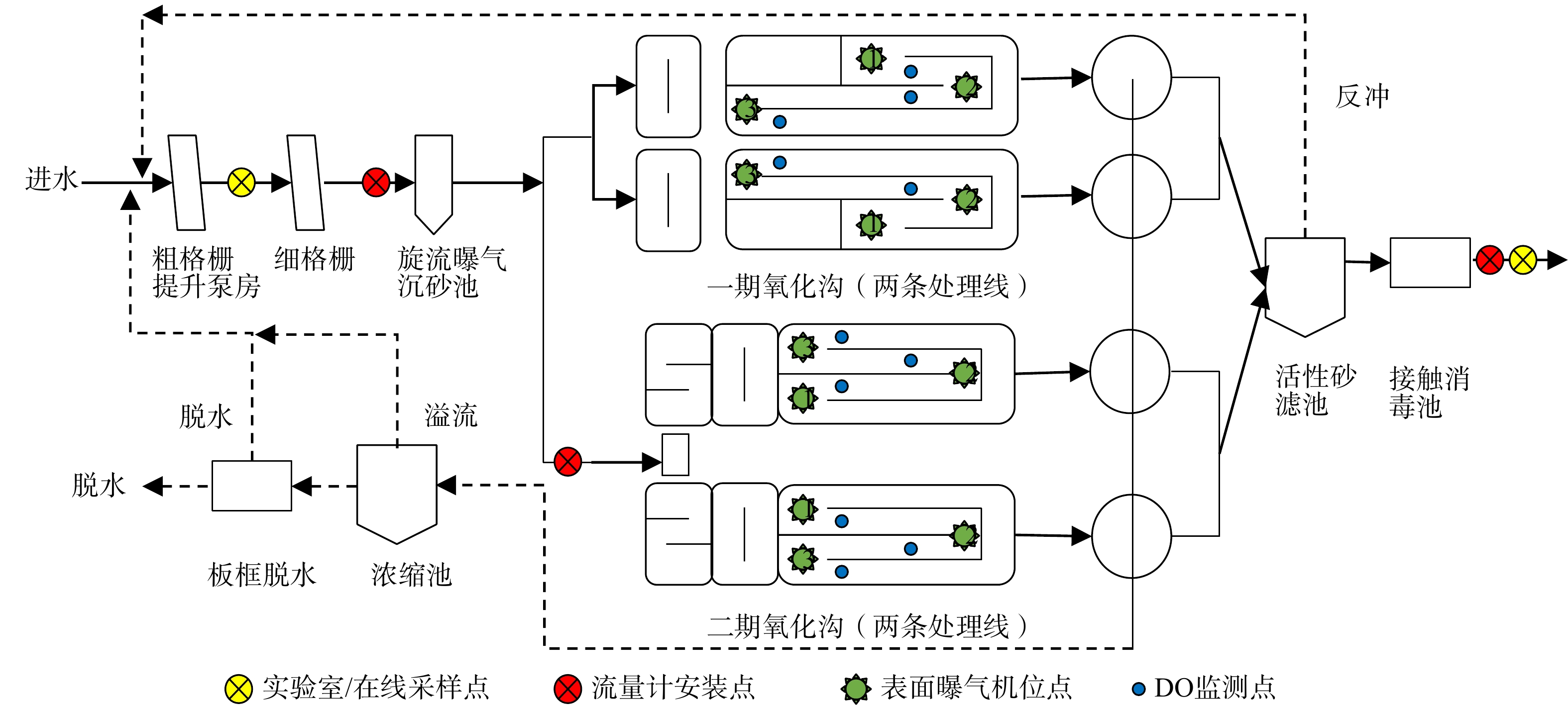
 下载:
下载:





